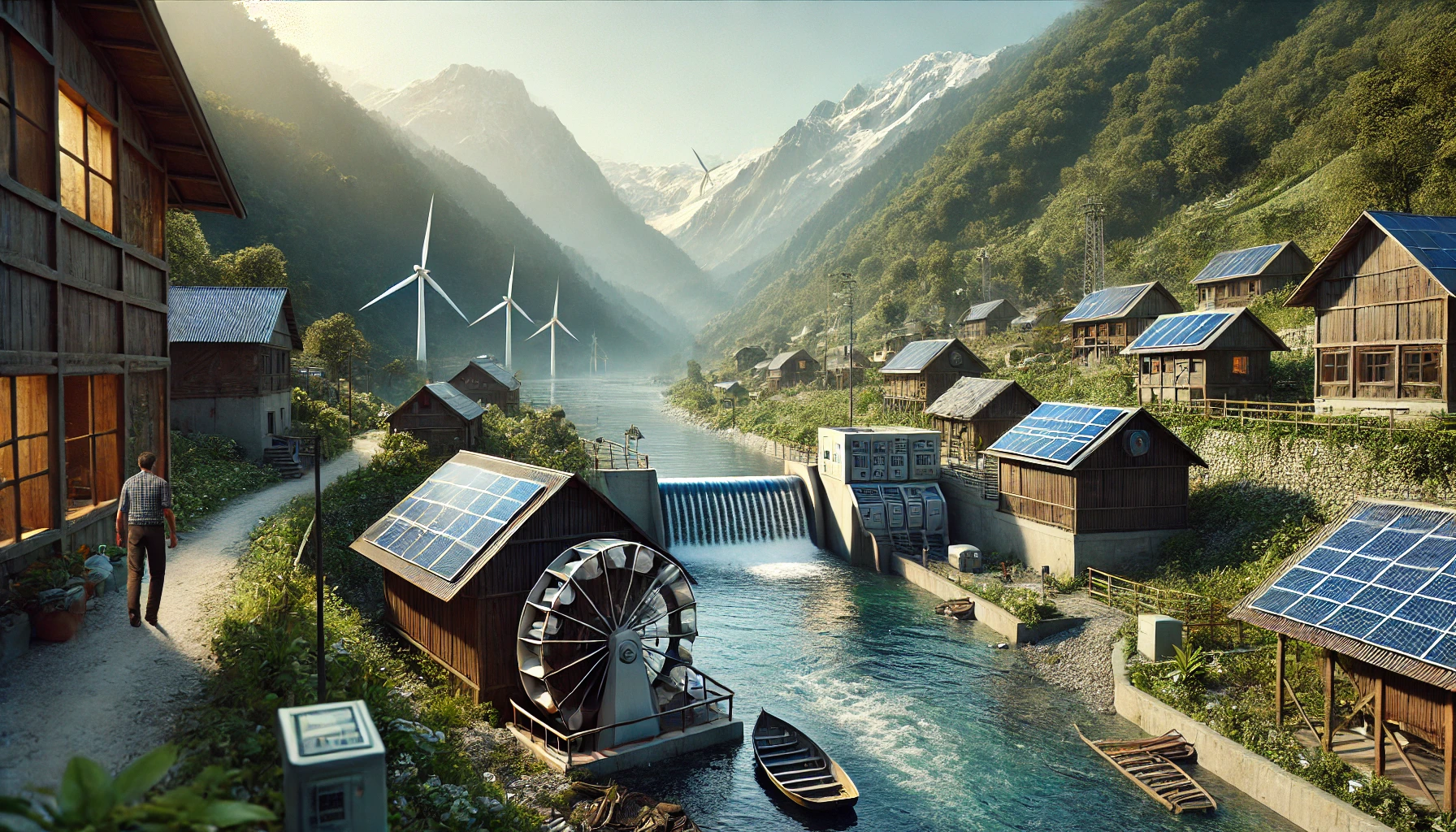Hydropower Reinvented: How Micro-Hydro Systems Are Lighting Up Remote Communities

The Power of Water: A New Frontier in Renewable Energy
When it comes to renewable energy, solar and wind seem to get all the love. But let’s not forget about one of the oldest, most reliable sources of clean power—hydropower! While traditional hydroelectric dams are great, they’re not always an option for remote communities. That’s where micro-hydro systems come into play, offering a lifeline of renewable energy to off-grid places. And with modern technology making these systems more efficient than ever, it’s safe to say that hydropower is experiencing a bit of a glow-up.
Why Go Micro? The Magic of Small-Scale Hydropower
So, what exactly are micro-hydro systems, and why are they so great? Unlike those behemoth dams that block entire rivers, micro-hydro systems use much smaller water flows. Think of a peaceful stream in the woods or a small river nestled in a valley. These systems convert the natural flow of water into electricity, making them perfect for communities that are off the beaten path. The best part? They’re eco-friendly, produce consistent energy, and don’t disrupt the environment in the way large-scale dams do. Plus, they’re easier to install and maintain!
Tech Innovations: Making Micro-Hydro Smarter and Greener
Like every other technology, micro-hydro power is getting a tech upgrade. Recent innovations are making these systems not only more efficient but also more environmentally friendly. Engineers have developed more durable turbines that can operate in lower water flows, allowing micro-hydro systems to work year-round, even in the dry season. And, thanks to smart technology, these systems can now be monitored and optimized remotely, making maintenance a breeze for communities with limited resources. Plus, they’re now being designed to have minimal impact on aquatic ecosystems, so the fish can swim happily ever after.
Remote Communities: Turning Water Into Electricity
Imagine living in a village where electricity is a luxury. For many remote communities, access to reliable power is a game-changer, impacting everything from education to healthcare to economic opportunities. Micro-hydro systems are providing a sustainable solution to these challenges. Communities in Nepal, Peru, and even Alaska are turning to micro-hydro systems to power their homes, schools, and businesses. These systems are particularly useful in areas where running a grid is either too expensive or downright impossible. And the best part? They create local jobs, as people are trained to operate and maintain the systems.
Cost-Effective and Sustainable: The Future of Micro-Hydro
One of the most appealing aspects of micro-hydro systems is their cost-effectiveness. While the initial installation can be pricey, the long-term savings are undeniable. With little maintenance and no fuel costs, micro-hydro systems can provide electricity at a fraction of the cost of traditional diesel generators or solar setups. Moreover, they have a longer lifespan than many other renewable energy sources, making them an investment in both the environment and the community. As more innovations emerge and costs continue to drop, micro-hydro could soon become the go-to energy source for off-grid areas worldwide.
Challenges and Solutions: Overcoming the Hurdles
Of course, no energy system is without its challenges. Micro-hydro systems can be vulnerable to seasonal changes in water flow, and in some cases, there may be concerns about their impact on local wildlife. However, recent advancements in turbine design and water management are helping to mitigate these issues. Newer systems can adapt to varying water conditions and operate efficiently, even when water levels are low. Environmentalists are also working closely with engineers to ensure these systems remain as eco-friendly as possible, addressing concerns about the impact on fish and other aquatic life.
What’s Next for Micro-Hydro? A Look to the Future
The future looks bright for micro-hydro systems, with advancements in storage technology and smart grid integration on the horizon. One exciting development is the potential for hybrid systems that combine micro-hydro with solar or wind power, providing even more reliable energy to remote communities. These hybrid systems can balance out the fluctuations that occur with water flow, making energy supply more consistent year-round. As the world continues to look for cleaner, more sustainable energy solutions, micro-hydro power stands out as a key player in the renewable energy revolution.
Ready for a Splash of Renewable Energy in Your Backyard?
With micro-hydro systems proving to be a game-changer for remote communities, it’s only a matter of time before we see them popping up in more places. Who knows? Maybe one day, you’ll have your very own micro-hydro system powering your off-grid cabin or mountain retreat. The possibilities are endless, and the benefits—both to the planet and your wallet—are undeniable. So, what do you think? Is micro-hydro the future of renewable energy for remote areas, or do you see other technologies stealing the spotlight?



